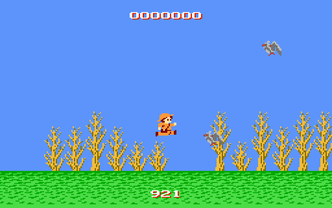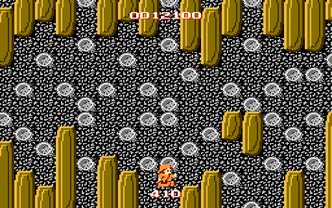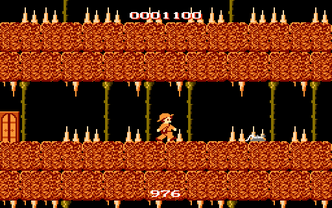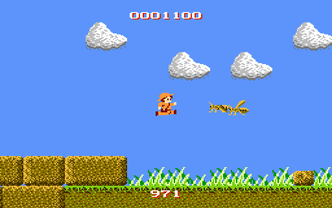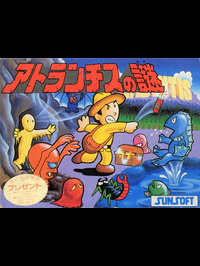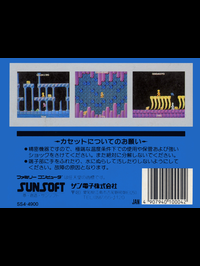Navigation:
Atlantis no Nazo Nintendo
Atlantis no Nazo (The Mystery of Atlantis) is a Japan-exclusive action-adventure platformer known for its unrelenting difficulty and non-linear (and often non-sensical) level progression.
Atlantis no Nazo (translated to The Mystery of Atlantis) is an action-adventure platformer developed and published by SunSoft for the Famicom (only in Japan) on April 17, 1986. The player assumes the role of Wynn, a boy adventurer who sets out through the mystical land of Atlantis (risen from the ocean depths) to rescue his missing master. The game is known for its non-linear progression through 101 "zones" (including many hidden warps only accessible through non-sensical means, such as throwing dynamite into hidden spaces, falling into certain pits, or commiting suicide by dynamite in a certain area). Atlantis no Nazo is also known for its intense difficulty, mainly from the player character's hard-to-control jumping and falling physics.
A prototype cartridge of Atlantis no Nazo for the Nintendo Entertainment System was unraveled decades later, revealing that the game was to be officially translated and released outside of Japan on 1989 by Activision as Super Pitfall II (the sequel to the unrelated Super Pitfall). Other than minor translations, it would make major changes to some infamous zones (such as the "BLACK HOLE!" zone warping to zone 29 when the player has one life remaining, and the "secret final zone" giving the player every power-up). Despite the translated game not being released, the original game became a cult classic after its appearance in the Japanese television series GameCenter CX (known in the United States as Retro Game Master).

